Our “green planet” is immensely blessed with an abundant variety of different kinds of plants. Each plant is proudly standing with its uniquely beautiful features and humbly serving us with its specific benefits for us and our ecosystem. The thuja plicata virescens is a cultivar of the plant Western Red Cedar belonging to the family Cupressaceae (Cypress) and the genus Thuja.
It has dark green foliage of a unique scale-like pattern with the specific shine adding to its beauty. The shiny green needle-like leaves remain fresh and dewy throughout the year without changing color in the autumn season. This is a conifer that usually grows from 15 to 30 feet in height.
Thuja Plicata Virescens

This is native to the forests of the Pacific North Western region. In the wild environment, Western Red Cedars may reach up to a height of 200 feet and live an average life of thousands of years. In urban gardens, their average lifespan is around 15 years. These are not true Cedrus trees (Cedar family) while they just have the term “Cedar” in their names. So experts use the term red or white cedars with them for clarification.
It has few variations from the original species Straight Western Red Cedar make it more useful. The virescens were introduced for commercial selling in the 1990s by the Mitsch Nursery in Oregon. In this article, we will highlight the important facts about the Thuja plicata ‘Virescens’ along with an introduction to the members of the genus Thuja.
Species Of Thuja
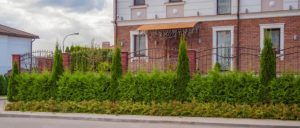
The Genus Thuja belongs to the Tracheophyte clade and the family is Cupressaceae. It has 5 main species:
It derives its name from the word “thyia” in the ancient Greek language which means “sacrifice”. The specific aroma which comes from some members of the genus on being crushed gives reference to this name.
- Thuja Koraiensis
- Thuja Standishii
- Autchuenesis
- Thuja Occidentalis
- Thuja Plicata
It is important to mention that Thuja Occidentalis and Thuja Plicata are common and important as compared to others.
- Thuja koraiensis
This species is native to Korea and is commonly called Korean Thuja. - Thuja Standishii
This is native to Honshu and popularly known as the Japanese Thuja. - Thuja Sutchuenesis
This is native to China and is almost extinct in the wild environment. - Thuja Occidentalis
Important features are mentioned below:
- These were introduced by Carl Linnaeus in the middle of the 17th century.
- Thuja Occidentalis is an evergreen coniferous tree in the cypress family.
- These are native to Canada and the Northeastern regions of the USA.
- These are popular plants grown for decorative purposes.
- They are commonly called white-cedars or eastern arborvitaes or eastern white cedar.
- These are small trees with reddish-brown shades of peeling bark, usually 49 feet tall and 5 ft in diameter.
- The fan-like branches bear spiky leaves having seed-bearing slender-shaped cones.
- It is popularly used in medicine in the Ojibwe culture and is commonly called the “Grandmother cedar.”
Popular varieties are mentioned below:
Thuja Occidentalis ‘Maloyana Holub’, Thuja Occidentalis ‘Smaragd’, Thuja Occidentalis ‘Weterfield’, Thuja Occidentalis ‘Sunkist’ and Thuja Orientalis ‘Franky Boy’.
Thuja Plicata
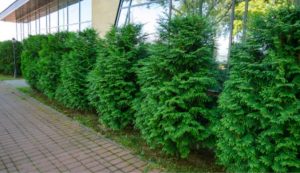
The small leaves of the plant give it the derived name ‘plicata’, which is from the Latin word ‘plicare’ which means ‘braided’. It is native to the USA. Commonly found in forest areas of the Southern region of Alaska along the Pacific coast to California’s Northern area and the Northern Rockies from British Colombia to Montana.
Most of the cultivars have needle-like leaves that have white spots on the lower surface. The seed-bearing cones are light green and less than an inch in length. It has under mentioned popular cultivars/varieties:
Thuja Green Giant, Thuja Plicata ‘Whipcord’, Thuja Plicata ’Stoneham Gold’, Thuja Plicat ‘Grune Kugel’ and Thuja Plicata ‘Virescens’.
Thuja Plicata Virescens
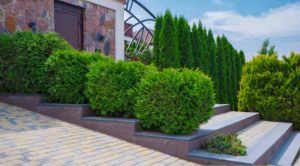
Important features of this species are mentioned below:
Other Names
It is also known with different names like ;
Virescenes Western Aborvitae, Virescenes Western Red Cedar, and Shinglewood. Where Aborvitae means “the tree of life” in the Latin language.
Tall Height
It is the tallest of all other species of the Thuja. It gets around 15 to 30 feet tall and can spread up to 12 feet.
Growth Pattern
It has an upright growth pattern while the Thuja Plicata plant grows and spreads in a horizontal direction. A single tree forms a compact narrow pyramid when it gets matured.
Evergreen Foliage
The leaves of the Thuja Plicata ‘Virescens’ remain green throughout the year. This is a potential positive feature. Other varieties of Thuja get a bronze or brownish shade in autumn.
Non-Flowering
It is a nonflowering plant.
Fragrant Foliage
The leaves when crushed give a specific aroma. The bark also produces volatile fragrant oils like other common evergreen plants.
Deer Resistance
The Thuja Occidentalis is a preferred food for the deer so they can easily destroy the plants while roaming in the city. Thuja Plicata Virescens is not eatable for the deer. This deer resistance makes it a preferable option as compared to others.
Growth Rate
It has a quick growth rate with about a 1 to 2 feet increase in height every year.
Disease Resistance
It is somewhat resistant to many diseases but a few problems may occur due to unsuitable conditions.
Low Maintenance
The Thuja Plicata Virescens dwells in a wide range of conditions and is a low-maintenance hedge-making plant.
Care of Thuja Plicata Virescens
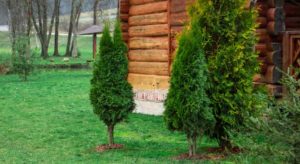
Important aspects required by the plant are mentioned below:
Soil Requirements
The conifer grows in a variety of PH of the soil. They even grow on soils with chock contamination. However, it dwells great in moist soil and the drainage should be good as wet soil leads to many different issues.
Water Requirement
The plant needs average quantities of water.
Sunlight Requirement
These hedges require a combination of full to partial sun.
Temperature Requirements
Thuja Plicata Virescens dwell well in cooler regions as they are native to the forests with moist soils.
Trimming Requirements
The Hedge needs a minimum trimming frequency of once or twice a year. The ideal time for trimming is by the ending of the spring season. The next trimming is better in the early days of the autumn.
Note:
Please make sure you don’t trim in or after the beginning of winter as you have to give some time to the hedge to gain its coat before the winter gets harsh.
Growth Zone
The optimum growth zones are USDA hardiness Zone 5 to 7.
Pruning
It can dwell well without pruning. In gardens, they are pruned intensely or mildly to make different decorative shapes to add beauty to the garden fence.
Cultivation of Thuja Plicata Virescens
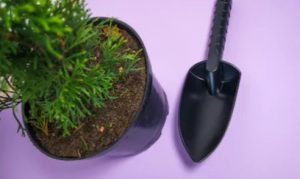
Ideal Time
The early days of spring and fall are the ideal time to plant the Thuja Plicata Virescens. However, in the cooler regions of America, they can be grown all year round. If you decide to plant them in winter, make sure to skip at least six weeks before the forecasted snowfall to save the roots from freezing and drying out.
Cultivation Method
The bare root trees are cheap to get but these don’t prove to be much successful in growth. Potted or bur lapped small trees are good for cultivation.
Soil Preparations
Add some peat moss, compost, or organic material in 3 inches in and around the area for the plantation. Now mix it in the soil by digging up to 12 inches deep in the soil.
Plantation
Now dig a hole according to the length of the potted plant or the root ball, keeping the depth 2 times the ball width. Now plant the tree in the soil at a straight angle. The levels of the tree ball and the surrounding soil should be the same.
You can remove the ropes of the root ball keeping the burlap to allow it a natural decomposition in the soil. It will protect the feeble newly planted roots until their complete decomposition. Now fill up the soil and mildly harden the upper soil with the tools.
If you are planting many trees to make up a hedge plant the trees keeping a distance of 3 feet. If you want a quick hedge filling then reduce the gap up to 2 feet to enhance the hedge forming ability of the plant. The Thuja Virescens hedge needs 7 to 12 months to gain good shape after the plantation.
Initial Care
Watering
The mature plant is low maintenance and strong but the baby Thuja Plicata ‘Virescens’ are feeble and need proper care to thrive in its initial days.
You need to water the baby plant once or twice a week to nurture the thirsty roots. If the soil is sandy, the frequency of the watering routine has to be increased.
Fertilizer
In the initial spring, you need to add a suitable fertilizer with high nitrogen content. 16-8-8 formula is the suitable quantity (1/3 pound fertilizer per foot of the tree’s length) is a good choice.
You can sprinkle the fertilizer mildly around the base of the tree and help it seep in with a hoe and good watering. Never add the fertilizer in the hole during the initial digging as it will dry out or even burn the roots of the Thuja Virescens plant.
Problems in Thuja Plicata Virescens
Although it is resistant to disease few common pests like beetle borers, spider mites, leaf miners may attack occasionally.
Tree Deaths in Droughts
The severe heat waves in dry areas may lead the plant to starvation as it may fail to carry out photosynthesis in the absence of water.
Uses of Thuja Plicata Virescens
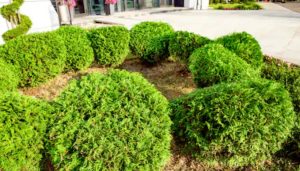
Fencing And Distribution
The Virescens variety is tall, thick, and tough which makes it a preferable option to be used as a hedge. This hedge is good enough to create a distribution for privacy between two areas or lawns of two neighbors or a simple cover for the lawn on the road.
Shielding
The hedges can also be grown for windbreak or shielding.
Decoration:
Gardeners use pruning and scissor work to create beautiful shapes for the decoration of the garden or the pathways.
Related Posts:
Frequently Asked Questions
How do you plant Thuja Plicata?
For planting it, all you have to do is dig a hole according to the potted plant’s length or the root ball. After this, plant the tree within the soil at a straight angle. The tree ball’s leaves and the surrounding soil should be the same.
While planting, you must keep the burlap for protecting the feeble roots by decomposing naturally with soil. Now fill the pot with soil and harden the upper soil surface with respective tools. The plant generally takes 7-2 months in acquiring good shape after plantation.
How tall does Thuja Plicata grow?
This tree is tallest as compared to other species of Thuja. The maximum height of the plant can range from 15 to 30 feet and its maximum width is around 12 feet.
How long do Thuja trees live?
The Thuja trees are durable and their life span is estimated around 40 years if provided ideal growing conditions.
Conclusion
Thuja Plicata ‘Virescens’ is a popular variety of the Cupressaceae family with beautiful dewy evergreen leaves and pyramid-like narrow growth patterns. The plant is commonly used to form hedges in the gardens for beautification, partition, or as a privacy sheet.
Its tall height, low maintenance, resilient nature, and deer resistance give it a comparative edge over the other members of the family. Next time you consider making a hedge around your garden, don’t forget to consider the Thuja Plicata Virescens!!

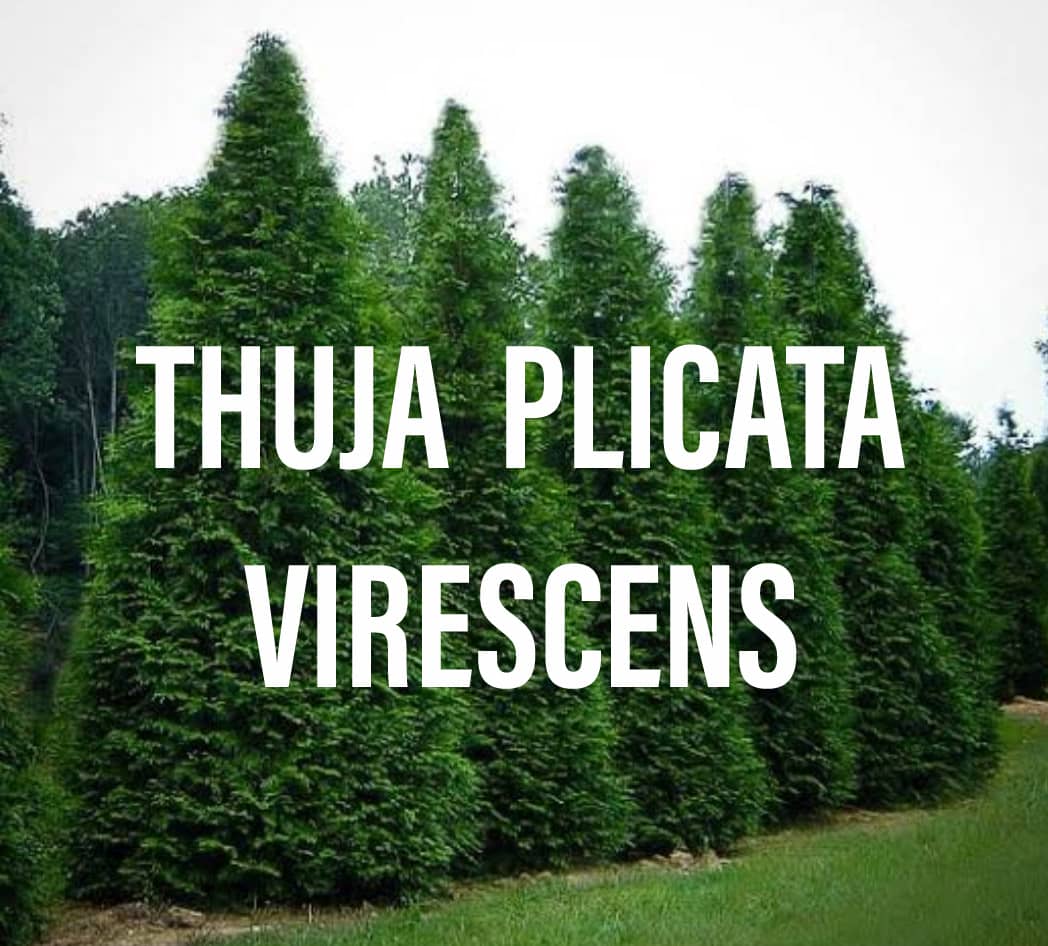
Comments are closed.